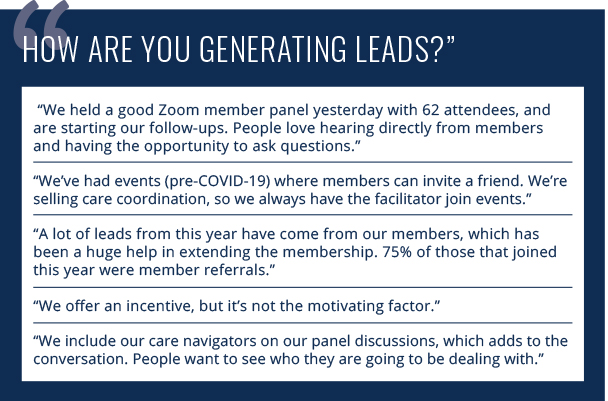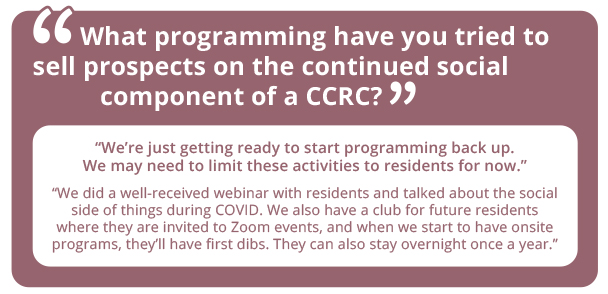One of the most mispronounced words of 2021 is disrupting senior living communities in 2022.
Near the beginning of December, our participants had heard about the Omicron variant, but it wasn’t impacting them much yet. One marketer said, “The last data I heard was yesterday in our area that there were only nine cases of COVID-19 in our hospital, which is the lowest it’s been since the beginning of the pandemic.”
Another participant commented, “Right now we’re preparing for ‘just in case’ mode, making sure our communities and departments have rapid tests and enough PPE.”
Even during the second week of December, the focus was on planning and throwing holiday parties, not on Omicron. One roundtable participant said, “We’re having all kinds of holiday activities, and it has been fun to come together as a community to do this.”
And when we asked if the Omicron variant was an issue? Responses included: “I haven’t heard a thing” and “not yet.”
The Holiday Gift Nobody Wanted
Later in December, concern began to mount. “We’re getting anxious about the Omicron variant,” said one participant. “We’re asking families to be cautious and test before visiting. We’re reloading on PPE and N95 masks to use in the buildings for a few weeks. We’re trying to keep things safe through this surge.”
A roundtable member in Arkansas commented, “A lot more folks are taking it more seriously. People are masking up more in the community.” A participant in Illinois added: “There is an uptick in the Omicron variant around here. We’re offering free testing for the community.” From Wisconsin, we heard: “We’re going to get through Christmas and keep moving forward until after the holiday. We held a clinic last week where 75 people got boosted, including both residents and employees. Everyone is nervous about what’s going to happen with the new variant.”

New Year, New Cases
By the end of the month, communities were shutting down New Year’s Eve parties. One couple received a celebration kit complete with filet mignon, a dessert sampler and party hats after the community’s bash was canceled due to an outbreak among the staff.
Now that Varsity has held its first post-holiday roundtable on January 6, the situation has blown up. With Omicron surging, many communities feel like it’s Groundhog Day — they closed, they opened, and now they’re closed again.
One marketer commented, “COVID-19 has definitely hit here for staff as well as our residents, and all of our areas of long-term care as well as independent living. All of our events where we’re bringing people on-site have been canceled at this time. Private appointments or tours are on a case-by-case basis.”
Reports were similar at another community: “We’ve been hit hard with lots of cases of COVID-19. The state has surged in a big way, like everyone. We’re owned by a hospital system and they offered a drive-through testing to the community. 42% tested positive.”

What Are Your Resolutions for 2022?
With communities across the country dealing with Omicron, one participant said, “I hear a lot of defeat in people’s voices. We can be very grateful for a lot.”
Another marketer commented, “It’s been a challenging time but there is a lot to be thankful for. We have had a really good year and I think we can have that again. I think the pandemic has caused a lot of fear, but I think it’s more about being cautious. Another participant added, “Once people got vaccinated, things got into a bit more normal living. And now it’s taken a big swing back right now. It isn’t going to be like this forever.”

Some roundtable members felt that we’ll get used to it. “Hopefully it will be like the flu in the future and we just get a booster shot, just like the flu has a different variant.” And one last comment: “I think we will just start accepting this new reality for restrictions for safety.”
Let’s all resolve to think positive and support one another in 2022! We’re looking forward to coming together this week. You’re welcome to join our Sales & Marketing Roundtable on Thursdays at noon ET, 11 a.m. CT and 9 a.m. PT.
For login information, email DDunham@varsitybranding.com.




































